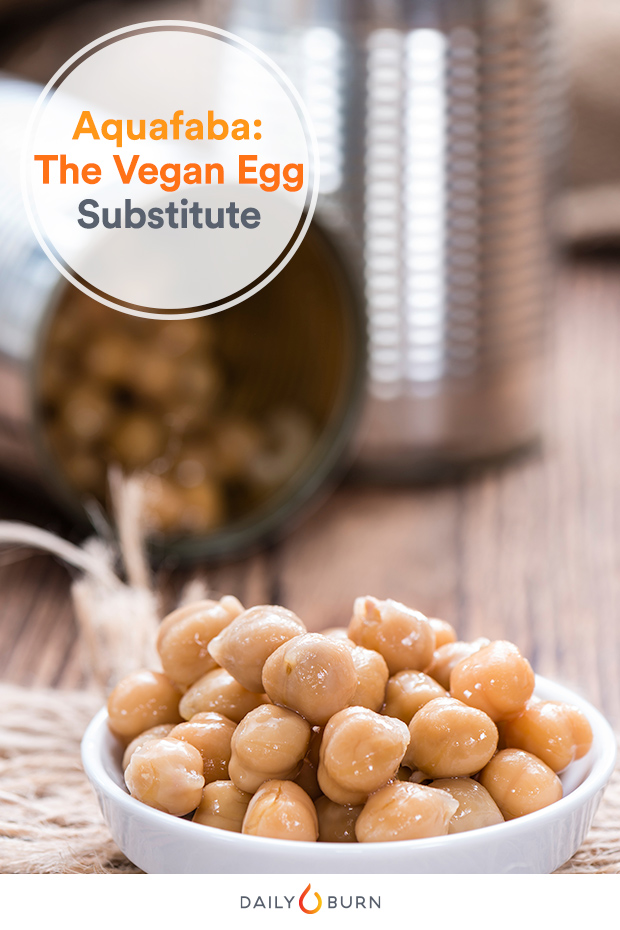
When you open a can of chickpeas, what do you do with the liquid inside? If you’re like most people, you probably wash it down the drain. But if you’re vegan or vegetarian, you might want to save that water.
It turns out that the slightly thick and slimy water we’ve all been throwing away is actually a near perfect egg substitute. Cooks around the world have heralded chickpea water, aka aquafaba (literally meaning “bean water” in Latin), as the next big thing. And it’s not just famous chefs like Adam Kaye of Blue Hill at Stone Barns getting giddy about the possibilities this liquid holds. Home cooks, vegan food bloggers and even bartenders are smitten, too, since aquafaba makes everything from meringues to mayo to ice cream and baked goods all possible — without eggs.
“It’s full of potential and the culinary applications are still being discovered,” says Sonali Ruder, DO, ER physician, chef and author of the blog The Foodie Physician. Curious about this new cooking sensation? Here’s what you need to know about aquafaba — and if it’s all it’s cracked up to be.
RELATED: The New Diet That Lets Vegans Eat Eggs
The Holy Grail of Vegan Cooking
The recent discovery of aquafaba is like finding that elusive puzzle piece in vegan cooking — a good substitute for eggs and egg whites. Why? Simply put, eggs are hard to replicate. Egg yolks and egg whites have very different compositions and serve different functions in recipes.
“Egg yolks are mostly protein, fat and cholesterol, making them excellent emulsifying agents. Egg whites, on the other hand, are mostly water and protein. This allows them to be whipped up into light foams,” says Dr. Ruder.
However, common egg substitutes don’t span this whole spectrum. According to Dr. Ruder, stand-ins like applesauce, flaxseed and chia seed work in muffins and cakes but not meringues or soufflés. Commercial egg substitutes often don’t taste great and need to be cooked, nixing them from use in cocktails or whipped cream.
RELATED: 3 Questions to Ask Yourself Before Going Vegan
Aquafaba, on the other hand, can do both. “It has good thickening and foaming properties and can be whipped up to make whipped cream, mousses, soufflés, mayonnaise, aiolis and more,” says Dr. Ruder. “You can also use it to add airiness to dishes that use eggs like pancakes, waffles and muffins. And because of its high starch content, it can also be used to form gels.”
Food companies are jumping on the aquafaba train, too. Sir Kensington’s recently released a vegan mayo Fabanaise made from aquafaba.
How to Use Aquafaba
It’s pretty simple: Drain a can of chickpeas (or reserve the cooking water from cooking the beans), and use the liquid in place of egg or egg whites in your recipe.
“A good rule of thumb is to use one tablespoon of aquafaba for one egg yolk, two tablespoons for one egg white or three tablespoons for one whole egg,” says Dr. Ruder. Your aquafaba should be the consistency of egg whites. If not, you can reduce it on the stove to thicken it.
The excitement over aquafaba has also spawned a Facebook group with over 50,000 members, where they record their successes and failures of using the unique cooking liquid.
RELATED: 14 Best Proteins for Meatless Meals
To Whip or to Drain
While the food world is ablaze with aquafaba praise, there are still many questions about chickpea water, including its health and nutritional benefits, says Dr. Ruder. There are also questions about whether the water in other canned beans and legumes can be used as an alternative for aquafaba.
According to the Aquafaba website, the liquid contains approximately three to five calories per tablespoon of aquafaba and one gram protein. “It’s primarily made of starches, proteins and other plant solids that have migrated from the legumes into the water,” says Dr. Ruder.
At the end of the day, there are still plenty of reasons to opt for chickpea water. According to Dr. Ruder, it’s not only a good way to cut down on saturated fat intake by avoiding heavy cream when making whipped cream, but it’s great for reducing food waste and promoting food sustainability. “Think about all of the water from canned legumes you throw away that you can now could put to good use!” she says.
